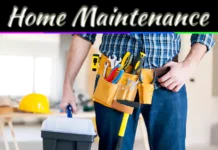Nothing is more crucial than staying warm when the temperature outdoors is below freezing. Additionally, it is essential to keep your home cool during the heat. Until something goes wrong, a majority of people usually take their HVAC system for granted. Regardless of the season, your heating and cooling systems work tirelessly to maintain a comfortable interior temperature in your house.
Failure to operate your HVAC system properly may cause you to land in hot water, particularly during summer when temperatures are too high or the winter when temperatures are abnormally low. As a homeowner, you should be familiar with basic troubleshooting strategies that can come in handy when your HVAC system incurs faults.
Replace Your HVAC Filters
Filters that are clogged, out of date, or unclean are significant contributors to leaking and overall poor HVAC performance. As a result, the first troubleshooting method you should master is correctly checking and replacing air filters. When filters get clogged or blocked, the system is forced to perform more efficiently to accomplish the required results.
This occurrence consumes a significant amount of energy and degrades the HVAC system, shortening its lifespan. You should replace the filters every after 90 days. If the filters are worn out, and ineffective most of the time, you can have them replaced after a month.
Check For A Loose Connection On Your Thermostat
Even though it appears to be a pretty simple remedy, the thermostat is frequently to blame for HVAC-related difficulties. Verify whether the batteries in your thermostat are working if it’s battery-operated.
If your thermostat is electric, check for a loose connection. When your HVAC system fails to turn on at all, you should always check the thermostat first.
Inspect The Unit From The Outside
When evaluating your HVAC system, you’ll probably miss the external unit. However, this component of your system is extremely important since it serves as the hub for airflow throughout your home.
Due to the unit’s location, debris such as leaves and branches might get caught inside and damage the system. Debris removal from within and around the unit will aid in the system’s operation.
Reset Your Circuit Breaker
If you’re fortunate, resolving your HVAC issues may be as simple as turning a knob. A tripped breaker indicates that you must reset your HVAC system to resume regular operation.
Reset your circuit breaker to rule out an electrical problem. If your HVAC system continues to refuse to switch on, consider hiring a professional.
Clean All The Ducts And Vents
As your air conditioner circulates air throughout your home, small particles such as dirt, dust, and other foreign objects can become lodged in or clog the vents, ducts, and registers. It reduces the air conditioner’s performance, degrades the indoor air quality, and makes your home feel uncomfortable.
It would be beneficial to know when to clean the vents, registers, and ducts. Additionally, due to the complexity of vent and duct cleaning, it’s a good idea to contact a specialist.
Inspect The Wiring
At any point, wires can become disconnected or damaged. It’s more likely to occur with outdoor air conditioning units because landscaping equipment can cause damage to exposed cables.
If your system refuses to reboot or work, it’s worth checking. Handle any potentially broken or exposed wires with care since they could give you an electric shock.
Clean Your Whole Unit
If the area around your unit is not cleaned and maintained correctly, it might create a safety hazard. Clear the space around the unit of combustible materials and chemicals to avoid a fire. Vacuum and clean the surrounding area of the unit carefully to prevent a clog.
Allowing at least two feet of space around the furnace and routinely cleaning the area can help with its longevity. It also reduces the possibility of requiring a replacement and safety risks.
Look For Frozen Coils
If your air conditioner is on but not emitting cool air, inspect the coils inside for ice. This occurs when condensation that would ordinarily form in the drain pan condenses on the coils.
The water on the coils freezes, obstructing heat transmission and stopping the coils from cooling the air in your home. While frozen air conditioners are simple to repair, you should contact heating repair Henderson if this occurs more than a few times.
Schedule Maintenance Visits
You don’t always need to troubleshoot independently—a professional can assist you. Scheduling HVAC maintenance regularly will help you avoid problems and extend its life.
Increased efficiency may result in lower electric bills and a decreased likelihood of an unexpected repair. A specialist can determine whether your furnace requires repair or cleanup.
Takeaway
There are numerous strategies to keep your HVAC system in good condition. Additionally, these tips may assist you in identifying problems with your system. When the source of an issue is unknown or when the solution is complex, it’s time to call in the specialists.







Thanks for the the tip that cleaning ducts can be a good way to ensure troubleshoot some HVAC problems. I’d like to know more about HVAC duct replacement services because I plan to get a bigger unit in my home soon. I think that will make cooling in my home a lot more efficient, leading to more favorable energy bills.
https://elitecleandfw.com/service/hvac-duct-replacement/